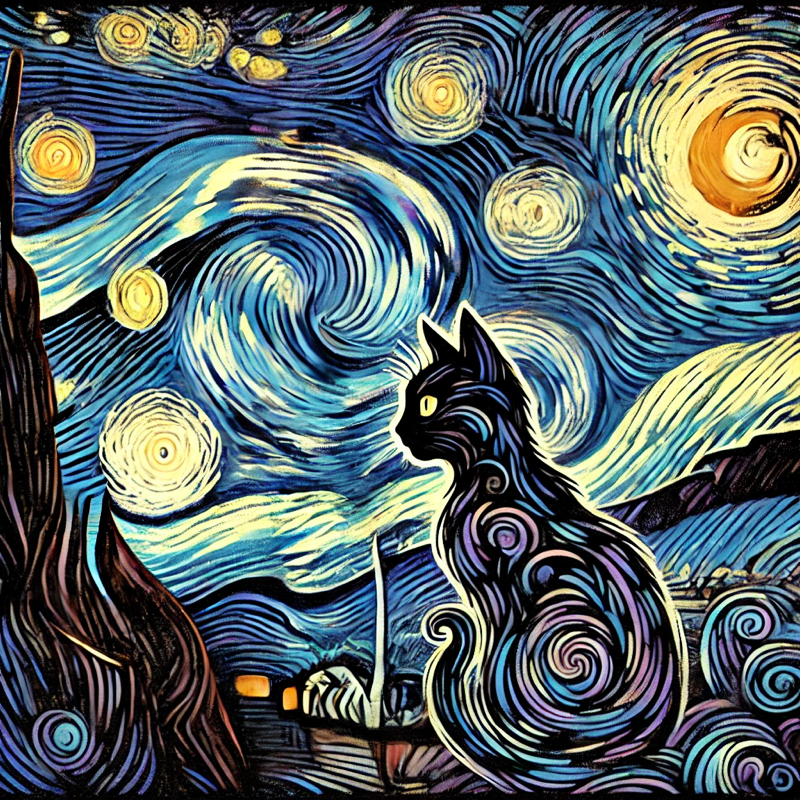The Misunderstood Mystique of Black Cats
Black cats have long been burdened by myths linking them to bad luck and witchcraft, leading to mistreatment and neglect. But as superstitions fade, these felines are finally getting the love they deserve. What can their story teach us about bias and societal change?

Introduction
For centuries, black cats have been entangled in myths, fears, and superstitions. In many cultures, they have been associated with bad luck, witchcraft, and even death. These beliefs have led to widespread discrimination against black cats, often making them the least adopted felines in shelters and victims of unjust persecution. However, as society progresses and logic takes precedence over superstition, perceptions of black cats are changing. This article delves into the deep-rooted biases against black cats, explores how these views have evolved, and highlights what we can learn from their journey toward acceptance.
The Burden of Superstition: Historical Biases Against Black Cats
Black cats have been at the center of various cultural narratives that have reinforced negative stereotypes:
- Medieval European Fear of Witches: During the Middle Ages in Europe, black cats were thought to be witches' familiars, aiding them in dark magic. Some even believed that witches could shape-shift into black cats to carry out their sinister deeds. This belief contributed to the mass killing of black cats, which ironically may have allowed rat populations to thrive, exacerbating the spread of the Bubonic Plague.
- Bad Luck Omens: In Western cultures, a black cat crossing one’s path is often seen as an omen of bad luck. This superstition has persisted into modern times, influencing people’s actions and decisions. Many drivers, for example, avoid letting a black cat cross the road in front of them, fearing misfortune.
- Religious Condemnation: Some Christian narratives further fueled the fear of black cats by linking them to the devil or demonic forces. This belief led to brutal practices, including burning black cats during religious ceremonies meant to ward off evil.
- Unfair Media Portrayal: Popular culture has also played a role in reinforcing negative stereotypes. Halloween decorations, horror movies, and folklore often depict black cats as ominous, lurking in the shadows as eerie companions to malevolent forces.
Changing Perspectives: A Shift in Society’s View of Black Cats
Despite these deep-seated prejudices, modern society has seen a gradual shift in the perception of black cats. Some of the key factors that have contributed to this change include:
- Scientific Rationalism: With the advancement of science and logic, people have started questioning and rejecting baseless superstitions. Black cats, like any other cats, have no supernatural powers, and this realization has helped combat outdated beliefs.
- Animal Advocacy and Awareness Campaigns: Animal shelters and advocacy groups have actively worked to change the perception of black cats. Campaigns such as "Black Cat Appreciation Day" highlight the beauty, uniqueness, and loving nature of these felines, encouraging adoption.
- Positive Cultural Representations: In contrast to past media portrayals, black cats have also been shown in a positive light. In Japanese folklore, for instance, black cats are considered good luck, especially for single women seeking romantic partners. In modern pop culture, characters like Salem from Sabrina the Teenage Witch and Luna from Sailor Moon have helped reshape their image into that of wise, loyal, and magical companions.
- Social Media Influence: The rise of social media has allowed black cat owners to share heartwarming stories and images of their pets. Hashtags like #BlackCatLove and #BlackCatsRule have amassed millions of views, helping dismantle old biases.
Lessons We Can Learn from the Journey of Black Cats
The story of black cats teaches us several important lessons about society, prejudice, and acceptance:
- Superstitions Have Real Consequences: Unfounded beliefs, when left unchallenged, can lead to discrimination and harm. Just as black cats were unfairly persecuted, many human groups have suffered similar fates due to baseless fears.
- Awareness and Education Can Challenge Biases: Learning about the origins of myths helps dispel them. Advocacy, education, and exposure are crucial in reshaping societal perceptions.
- Every Being Deserves a Fair Chance: Whether it’s an animal or a person, no one should be judged based on superficial traits such as color, race, or appearance.
- Media Representation Matters: The way individuals and groups are portrayed in stories, movies, and folklore can shape public perception. Positive representation fosters acceptance and understanding.
- Small Actions Can Make a Difference: Choosing to adopt a black cat, sharing positive stories, or correcting misconceptions when they arise are small yet impactful ways to challenge harmful stereotypes.
Conclusion
The tale of black cats is a powerful reminder of how deeply ingrained prejudices can shape the fate of an entire group. Once feared and vilified, black cats are now gradually being recognized as the affectionate and intelligent companions they have always been. Their journey mirrors the struggles of many marginalized groups in human society, reminding us of the importance of critical thinking, compassion, and the courage to challenge outdated beliefs. Whether in the case of black cats or societal biases at large, embracing truth over superstition paves the way for a more just and accepting world.
